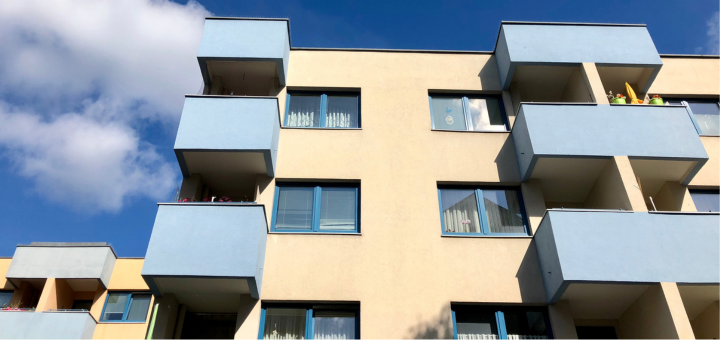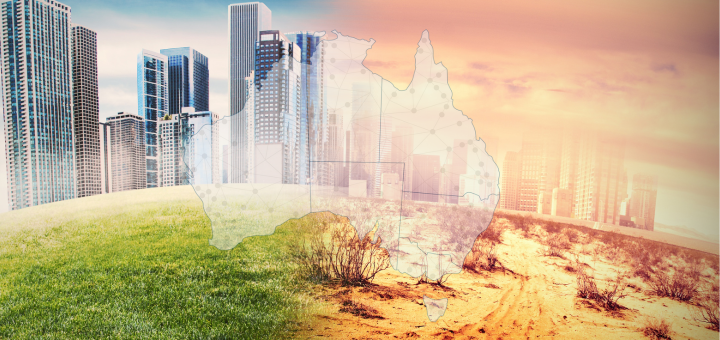This series takes a deeper look at the attributes that Australians believe makes somewhere a good place to live, where our values and local area experiences differ, rationalisations and implications. In this article we discuss ‘feeling safe’.
This blog is written to support the launch of our latest offer, Living in Place. Data informing this article was drawn from the Ipsos Life in Australia Survey. Living in Place is delivered in partnership with Ipsos.
How important is ‘feeling safe’?
‘Feeling safe’ is the most important attribute that Australians believe contributes to making somewhere a good place to live. And by some margin too, with the 2020 Ipsos Life in Australia Survey reporting that 72% nominated it among their top five liveability attributes, well ahead of the next most important aspects – ‘affordable decent housing’ (51%) and ‘high quality health services’ (48%). For the record,access to the natural environment‘ (47%) and ‘a diverse range of shopping, leisure and dining experiences‘ (33%) were the 4th and 5th most important attributes.
Who places a high value on ‘feeling safe’ and how safe do we feel in our local areas?
While the simple answer is ‘pretty much everyone’, our analysis shows that geography plays a role in informing the relative value residents place on this attribute, and how safe we feel in our local areas.
Despite those who call inner-city local government areas home selecting ‘feeling safe’ as their most important liveability attribute, the relative share of residents from these areas who felt this way was a good deal lower than those who make their home in Australia’s middle suburbs, outer suburbs, and fringe & peri-urban areas. Regional Australians placed a consistently high value on this attribute.
Residents of the nation’s inner-city and middle suburban LGAs felt most safe, rating their local area an average of 7.3 out of 10 in that regard. People who call the outer suburbs home rated their local area an average of 7.1 out of 10, whereas those who reside in the fringe & peri-urban areas felt least safe (relatively speaking) – scoring their local area an average of 6.8/10. From a regional perspective, small town and rural area residents felt most safe, scoring their local area an average of 7.6 out of 10, closely followed by those who live in a regional coastal area (7.5). Residents of larger regional centres (7.0) felt less safe, on average.


What does this tell us?
A lot. Psychologist Abraham Maslow described feeling safe and secure as the bedrock upon which our more social and aspirational needs can be met. Feeling safe is oxygen, the foundations upon which we can build our life, make a contribution, and reach for our dreams. If we do not feel safe and secure, we simply cannot participate to our fullest extent. Through this lens, it makes perfect sense that Australians cite ‘feeling safe’ as the most important attribute that contributes to making somewhere a good place to live.
While we should take some comfort that Australians (for the most part) feel safe in their local areas, we should not ignore that some Australians feel unsafe in their local areas, and that some Australian places are perceived to be less safe than others.
Feeling safe is a serious matter of public health, and, given the role it plays in enabling societal participation, it is by extension a matter of economic health. Given its importance, understanding and taking active steps to advance how safe people feel in their local area should be front and centre in policy makers’ minds across all levels of government.
How Living in Place can help you understand and advance how safe your residents feel in their local area…
Living in Place can assist local governments to understand the relative value your community places on ‘feeling safe’ and how safe your residents feel in their local area. Our analysis will identify whether your residents believe ‘feeling safe’ is an attribute where local area experiences need to be maintained or improved to advance quality of life across your LGA, and our online reporting platform will give you the ability to investigate how your residents’ views about this topic manifest within (demography, life-stage), across (small area geography) and beyond (external benchmarking) your LGA.
Visit our dedicated Living in Place website to learn more about the offer, where you can take a guided video tour of our best-in-class online reporting and exploratory platform, views.id. We’ve also written a blog discussing our deeper thinking the need for the offer, and published a case-study about how Living in Place is helping the City of Ipswich to make more resident centric decisions. Feel free to book a meeting a time convenient to you’re keen to learn more.











